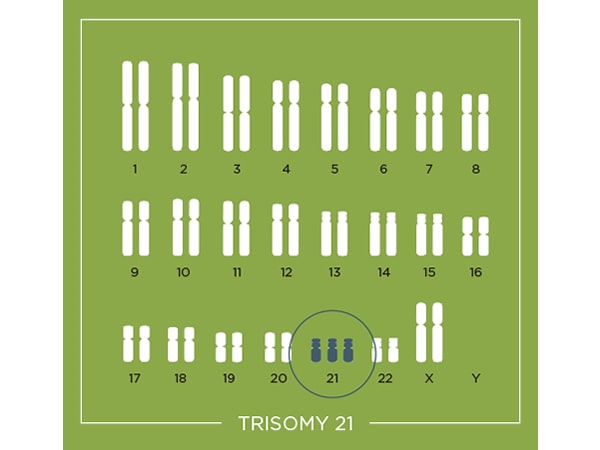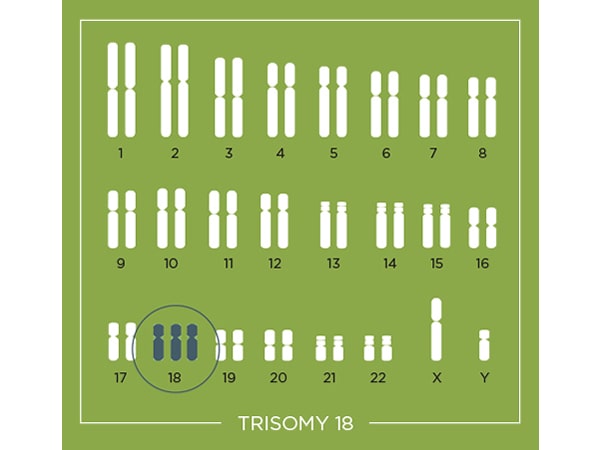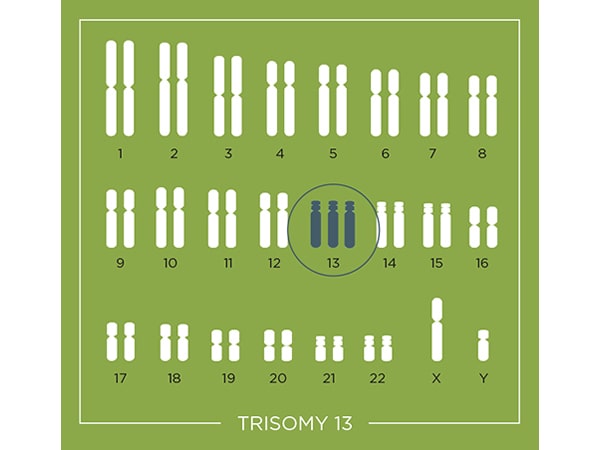Trisomy 21 (Down Syndrome), Trisomy 18 & Trisomy 13
Our cells usually have 23 pairs of chromosomes. Trisomy is the word used to describe the presence of an extra chromosome in the cells. Trisomies are named based on which chromosome has the extra copy, so a person with trisomy 21 has an extra copy of chromosome 21. The Harmony test looks for trisomy 21 (Down syndrome), trisomy 18 and trisomy 13.

Trisomy 21 (Down syndrome)
Down syndrome is the most common chromosomal condition not involving the X or Y chromosomes. It occurs in about 1 in 800 births and is associated with differences in physical and intellectual development that can be mild to severe. 1 While women of any age can have a child with Down syndrome, the likelihood increases with mother’s age.1
For more detailed information about Down syndrome including pregnancy management, health care guidelines, advocacy and support for families:
Trisomy 18 (Edwards Syndrome)
Trisomy 18 happens in about 1 in 5,000 live births.2 It occurs when cells have an extra copy of chromosome 18 and is typically not inherited. People with trisomy 18 have serious differences in physical and cognitive development. Although women of any age can have a child with trisomy 18, the likelihood increases with mother’s age.
For more detailed information about trisomy 18, including pregnancy management, health care guidelines, advocacy and support for families:


Trisomy 13 (Patau Syndrome)
Trisomy 13 happens in about 1 in 16,000 live births.3 It occurs when cells have an extra copy of chromosome 13 and is typically not inherited. People with trisomy 13 have serious differences in physical and cognitive development. Although women of any age can have a child with trisomy 13, the likelihood increases with mother’s age.
For more detailed information about trisomy 13, including pregnancy management, health care guidelines, advocacy and support for families:
References
- U.S. National Library of Medicine. Genetics Home Reference. Down Syndrome. https://ghr.nlm.nih.gov/condition/down-syndrome. Accessed January 28, 2021.
- U.S. National Library of Medicine. Genetics Home Reference. Trisomy 18. https://ghr.nlm.nih.gov/condition/trisomy-18. Accessed January 28, 2021.
- U.S. National Library of Medicine. Genetics Home Reference. Trisomy 13. https://ghr.nlm.nih.gov/condition/trisomy-13. Accessed January 28, 2021.
